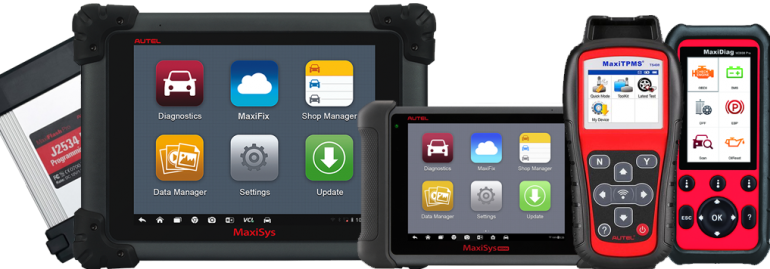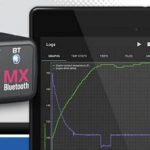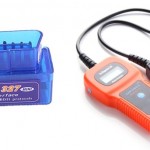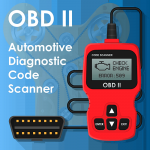Car is one of those most treasured assets of people that they like to take care of more than they do of any other possession. For car, it is more about keeping it well-maintained and up-to-date, and fixing any issue it may have causing trouble in driving.
Earlier, precisely before 1996 maintenance and diagnosis of cars were exuberantly expensive. The scanner and tools that were used for identifying and analyzing car faults and fixing them were not affordable for many.
Also, those car diagnostic tools were not very advanced in terms of multiple and cross utilization on other vehicles. This means one car diagnostic tool could mostly be used merely on one car.
This made technicians and mechanics and all DIY type of people spend thousands of dollars on the car diagnostic tools, which for obvious reasons they didn’t prefer.
However, recently with the introduction of different types of car diagnostic tools and scanners, a layman can be equipped with the right accessory and use it to its maximum level.
For instance, there are three types of OBD Scanners, which is also called Onboard Diagnostics.
These types of self-car diagnostic tools are mentioned below:
- Basic Code Readers
This type is the most affordable OBD scanning tool. It thoroughly analyzes the car, identifies its fault and is able to tell the owner the problem with their cars right away. Nevertheless, as the name suggests, it is the basic version of all the car diagnostic tools available.
So it doesn’t give out more detailed and professional data, including solution for each car issues and the likes. But, as far as you would like to know the exact issue, you will be in safe hands.
- DIY OBD Scanner
The Do-It-Yourself scanner type is a level above the basic version. It tells you more than just the fault with your car. As the name suggests, it also tells you the suggested solution so that you may do repairs yourself. Car owners are often passionate enough to explore their cars better and fixe the issues themselves.
This is a great car diagnostic tool for such intuitive car lovers. Moreover, this comes in handy when you are driving on a highway and don’t get to reach a mechanics shop for miles.
This will help you do the fixes yourself and even allow you to connect it with your handheld devices or laptops.
- Professional Scanner
These are the advanced car diagnostic tools, usually used by big car manufacturing plants and to assess the functionality level of heavy-duty trucks. As they are of the most advanced level, their features are rich and they allow us to analyze some predictable faults as well beforehand.
Nevertheless, you need to know how to use all these kinds of car diagnostic tools because they are not some sort of a magic potion that will automatically tell you the issues.
You have to properly plug it in and look for the code reader to see the check engine light and identify faults.
In several car diagnostic tools, they provide you data on fault codes and you will then have to look for the actual fault online for understanding the codes.
What does a check engine light mean?
Your car also tries to communicate to you if it is going through an internal issue that you obviously have no idea about. It is a good thing, right? At least, it communicates!
However, you have to be really vigilant when it tells you the problem.
Starting from the basic level, if there is an issue with your car’s transmission, wiring, engine or exhaust, it will be communicated to you through the check engine light.
Sometimes, the check engine light turns on but after a while, it turns off. This certainly does not mean that the problem has automatically been fixed because if you check out the code reader, it will show you the error.
Additionally, a check engine lights gets turned on for a range of car issues so you would not know exactly what to look for.
Handy tips to get you a car diagnostic tool
A couple of decades back when the car diagnostic tools was supposed to be a big and complicated purchase, these scanners and code readers were not easily available in the market and could only be found at exclusive and big car tool stores.
This kept the tools out of reach of the masses.
In recent days when the popularity of these car diagnostic tools has increased and laymen have started buying these scanners to understand their cars’ health, it has started to become available at normal retail stores that specialize in car parts and their retailing.
Thus, these could be found at multiple locations.
Moreover, there are a few retailers who are also willing to lend out the scanner and car diagnostic tools to people if they have established a good relationship with the retailers and they know that after diagnosing the problem with their cars, they will eventually come to them to buy the parts.
Thus, this means you can have the tools for free and diagnose the problem yourself before getting the relevant spare parts and fixing them.
In addition to this, there are a few big car tool retailers, who may give out and lend the professional and advanced level car diagnostic tools in subsidized prices.
However, the objective remain the same.
The benefit for this one is that you will be able to get a better product in a very cheap price to use it temporarily and get accustomed to its features.
How do you differentiate between an OBD I Scanner and an OBD II Scanner?
It is always a better idea to do some homework about the car diagnostic tool before actually buying it. This also means that you should know the difference between the two available scanners on the market.
The OBD I type caters to vehicles that were manufactured before 1996. This means before the computerized systems were launched.
However, since all these vehicles were made by different mechanics, it was difficult to find one unique OBD I Scanner exclusive for one’s vehicle and make, and there used to be some other for another make and model; making the whole process pretty complicated.
However, the whole car diagnostic process became far easier after 1996 when the next generation OBD II scanner was launched.
It is a standardized diagnostic tool for all the vehicles made after that year and so you do not have to look for a unique tool for your make and model. These have integrated trouble codes that are universal which can be understood by searching them online.
Usually, manufacturing plants look for the kind of scanners they want for the scope of features that each entail.
However, as a standard, all OBD II scanners are applied on all the vehicles produced after 1996 and can show you the trouble codes regardless.
How to plug in the car diagnostic tool?
Now that you have bought the right kind of car diagnostic tool for your car, the first thing that you should now be concerned about is how to connect it with your car.
For that reason, you need to first locate a diagnostic connector in your car.
In old vehicles and cars, this locator for OBD I scanner was found to be at random places including at the bottom of the dashboard or nearby the area of fuse or even inside the engine section.
Additionally, OBD I that was the first generation can come in all kinds of sizes and shapes.
If you are a real car enthusiast and you have a look at the plug of the scan tool, you will realize the kind of shape and size and dimensions that the diagnostic connector would have and so it will help you identify the diagnostic connector in your car easily.
On the other hand, if you have a new model that was manufactured after 1996, usually the connector can be located at the bottom of the dashboard for OBD II scanner tool.
It will be towards the left of the column of your car’s steering.
However, it will differ from one make and one model to the other in terms of how deep or how cornered it is located but the area usually remains the same. Moreover, in a more expensive car, these connectors are also covered with a panel.
Now coming towards the appearance of the connector. It is usually rectangular in shape because of the number of pins it has. The total number of pins is sixteen as a standard and they are distributed in two rows, eight pins in each column. There is also a possibility that it is located at the back of the ashtray at the center console.
In very rare occasions, it can also be in more complicated spaces depending upon the brand and model. In any case, it will always be given on your car’s manual so if you are facing difficulty in locating your car’s diagnostic connector, you should refer to the manual document.
How to use the code for the check engine light?
Once you have found your car’s diagnostic connector, connect your car code reader gently. It should be very gentle but in case you can’t plug it in, it means that you are doing it the wrong way or probably connecting it upside down. Just do a check before plugging it in and don’t be too harsh with it.
Once you have connected the diagnostic connector and it has been plugged in safely, now is the time to start your ignition. It will power the code reader on.
Now is the time when you may start seeing some kind of display and information.
The format and nature of data and information depend upon the type of car diagnostic tool that you have bought. It may ask for VIN from you to enter or the engine type of your car or anything else as per the device setting.
Once you are done entering the required data, the code reader is totally in a functional state. If you have bought the basic type, it will start showing you all the codes integrated in the device. In case you have a more advanced version, it will be able to display to you the trouble codes and how to read them and other relevant yet extra information that you may require to fix the issue.
How to understand the check engine light codes?
This is one of those critical questions that everybody wants to know the answer of. Below-mentioned is how it works:
If you have bought a basic code reader, it will only show you the trouble code. Now, it is your turn to do some research and homework. You search for the trouble code online and see what it means in an understandable language.
For instance, if the code it has shown to you is PO401, if you search for it online, it means that your car’s oxygen sensor is faulty and its heater circuits is having some issues. Now still you have not reached the exact fault but at least you know what area of your car is faulty and if it is safe to keep driving or you should decide on to call a car towing service.
In another case, if you have got an advanced car diagnostic tool, you are simply lucky!
The tool will be able to read the code for you and you would not have to spend time in any research or in understanding the code. So, it tell you the error in simpler understandable terms as well as the most advanced tool show you’re the troubleshooting alternatives to get rid of the issue if you may.
What’s next?
If your fancy and advanced car diagnostic tool is telling you the solution to fix the issue that your car is facing, you would not have to bother to see what caused it in the first place. However, if you have a slightly basic version then at least you should know what happened before it had triggered it so as to solve this particular issue with the car.
For instance, if the earlier example is followed, you will know that PO401 code means that there is an issue with your sensor heater circuit for oxygen. On further analysis, you will get to know that it has been caused by triggering of heater element fault. It can either be this or a wiring problem.
Now you will have two things to look for – first make sure whether or not the resistant capability of your heater element is fine. Then you have to see if there is a fault in the wiring. This investigation will further tell what caused the trouble in the first place. Once you know what the troubling factor was, you can decide what to replace and how much it would cost you.
How to finish the diagnosis?
There are also a lot of other code readers that may be provide more help than just reading the codes and remain functional in offering you more effective services. One of the best features of these code readers is to clear and remove the troubled codes that have been fixed already, so you don’t have to bother about them anymore or get confused.
Thus, if you see the same troubled code appearing on your device again, you’d know that the problem was actually not fixed earlier and you have to relook in the matter again.
Another important and sought out feature is the ability of these code readers to access a variety of data live even when the engine is running. This means, you will able to see the issue or if it has been resolved already in real time and so you don’t have to spend time in turning it off and on again.
Finally, some very effective code readers are now available to help you beyond this and they allow you to know the status of individual areas. So when you will clear all the above-mentioned codes yourself or perhaps disconnect the battery, your monitors will get reset on their own.
Thus, ideally and as a better approach, it is preferred to first have a look at the readiness monitor and look for the status of the issue to verify that the problems have been catered to and now you are ready to either disconnect your batteries or assume that you car’s issues have been fixed to drive it safely.







This work 2003 vw jetta 1.8t
For “2003 vw jetta”, use VAGCOM as no other scanner can do more. More info: https://www.totalcardiagnostics.com/shop/vagcom-rosstech-vcds
Writing this review to share experience using one of the mentioned OBD car diagnostic tools. I used the car diagnostic tool with my 09 Escalade when the check engine light popped up. Scan tool was very easy to use. I pulled up a P0446 code and reviewed it online.
Searched for how to video on YouTube and I ordered the necessary part from Amazon. The work took me about 30 mins and it cost me less than $80 (and I got a new code reader out of it which can be used again in future).
I attempted more expensive code readers, car scanners (with more functions) but I had to return them because they were not to my liking. I didn’t have this problem with this diagnosis tool. I was able to read the code and then erase it once I changed out the part with ease.
Car scanner is very useful in retrospect, and recommended for any car owner. We got specifically TOAD from totalcardiagnostics.com/toad
Got car diagnostic tool from amazon and thrilled it does as article says. It scans CEL status and trouble codes, Freeze frame, Live Data, O2 sensor data, monitor readinesss status, etc.
It loads, connects, and produces a result in a second, which makes it about 20 times faster than Actron and OTC scanners I’ve used.
What it doesn’t do is show codes stored in history. And it also doesn’t do ABS. Otherwise, if I had to scrape the bottom to come up with more criticism, it would be that the cable length is shorter than usual and that the interface comprises only 2 buttons, whereas 4 would have been much better, obviously. (These last two negatives are no big deal.)
The item comes with a USB cable so that you can hook the scanner to your computer. It would be possible to download and install upgrades for the scanner and with that it might be possible to enable the reader to do more things in the future. I’m not sure.
The item is fast and it’s cheap and it does a lot more than show you a P0xxx code.
Thanks for author for informative article.
Don’t make the mistake of thinking a diagnostic tool is a magical solution to fixing all of your vehicular troubles. It’s not going to fix a flat or replace a windshield.
If it does, that means the built-in AI has gotten a little too intelligent. In fact, the most basic diagnostic tools will only spew nonsense code at you when the Check Engine light is on. So, if you want to get the most out of the tool, you need to know when to use it.
When the Check Engine light is on: Remember the light that is seemingly always on, even when the engine is not dropping out?
That simple little light represents a number of different problems that can occur somewhere in your engine, transmission, or exhaust systems.
If you want to make sense of this light instead of just ignoring it, the diagnostic tool will get the job done.
Record vehicle performance/statistics: Some higher-end car diagnostic tools can do more than just read engine codes. More advanced tools can take live data measurements of the car’s systems to help you fine-tune the setup.
I would like to buy this diagnosing machine, I am an up coming young business man a d would like to specialise on Autotronics problem solving in a specialised and professional manner.
Please send me a quotation and clearly indicating terms and conditions of purchasing process